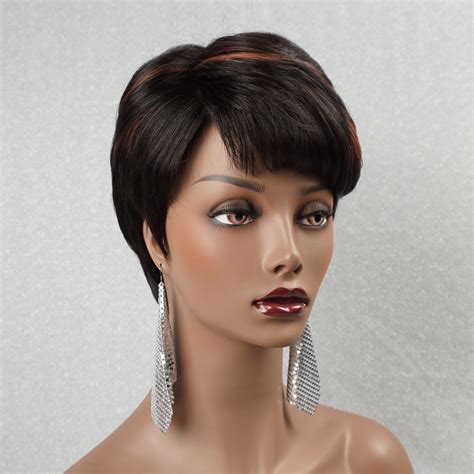Millions of cancer patients around the world face the challenge of hair loss during treatment. Wigs offer a solution to restore confidence and maintain a sense of normalcy. This comprehensive guide provides everything you need to know about wigs for cancer sufferers, empowering you to make an informed choice.

Understanding Cancer-Related Hair Loss
Hair loss is a common side effect of many cancer treatments, including chemotherapy, radiation therapy, and immunotherapy. The drugs used in these treatments target rapidly dividing cells, which can include hair follicles.
-
Chemotherapy: According to the American Cancer Society, up to 65% of patients undergoing chemotherapy experience hair loss.
-
Radiation Therapy: The National Cancer Institute estimates that hair loss occurs in approximately 30% of patients receiving radiation therapy to the head or neck.
-
Immunotherapy: This type of treatment uses the body’s immune system to fight cancer, and it can also lead to hair loss in some cases.
Choosing the Right Wig
Selecting the perfect wig for a cancer sufferer requires careful consideration of factors such as style, comfort, and fit.
Style
-
Synthetic Wigs: Made from artificial fibers, synthetic wigs are generally less expensive and more durable than human hair wigs. They offer a wide range of styles and colors.
-
Human Hair Wigs: Crafted from real human hair, these wigs provide a more natural look and feel. They are more expensive and require more care, but they can last longer than synthetic wigs.
-
Monofilament Wigs: These wigs have a thin, invisible base that creates the illusion of natural hair growth. They are comfortable to wear and provide a breathable fit.
-
Lace Front Wigs: The frontal area of these wigs is made from a delicate lace material, which gives the appearance of a natural hairline.
Comfort
-
Cap Size: Wigs come in various cap sizes to accommodate different head shapes and sizes. It’s essential to choose a wig that fits securely without being too tight or too loose.
-
Material: Look for wigs made from soft, breathable materials that won’t irritate the scalp.
-
Weight: A lightweight wig will be more comfortable to wear for extended periods.
Fit
-
Measuring Your Head: Use a measuring tape to determine the circumference of your head and the front-to-back and ear-to-ear measurements.
-
Wig Cap Size: Compare your measurements to the wig cap size chart to find the best fit.
Types of Wigs for Cancer Sufferers
There are numerous types of wigs available to meet the specific needs of cancer sufferers.
1. Medical Wigs
- Designed specifically for cancer patients
- Covered by insurance in some cases
- Made from high-quality materials for comfort and durability
2. Fashion Wigs
- Available in a wider range of styles and colors
- Not covered by insurance
- May be less durable than medical wigs
3. Headwear
- Includes turbans, scarves, and hats
- Can be worn alone or under a wig
- Provides warmth and concealment
Tips for Choosing and Wearing a Wig
-
Consult a professional: Seek advice from a wig specialist or hair stylist who can help determine the best style and fit for you.
-
Bring a support person: Take a friend or family member with you to provide emotional support and help with the fitting process.
-
Consider your lifestyle: Choose a wig that suits your daily routine and activities.
-
Secure the wig properly: Use wig tape, hair clips, or a headband to keep the wig in place.
-
Care for your wig: Follow the manufacturer’s instructions for washing, storing, and styling your wig.
-
Maintain a positive attitude: Wearing a wig can be an empowering experience that helps you maintain a sense of self and dignity during treatment.
Resources for Cancer Sufferers
Numerous organizations and resources provide support and guidance for cancer sufferers.
-
American Cancer Society: Offers information, support, and financial assistance to cancer patients.
-
National Cancer Institute: Provides a comprehensive resource for cancer information and patient support.
-
Look Good Feel Better: A non-profit organization that provides free beauty and appearance workshops for cancer patients.
-
CancerCare: Provides free counseling, support groups, and financial assistance to cancer patients and their families.
Tables
Table 1: Types of Wigs for Cancer Sufferers
| Type of Wig | Description | Coverage |
|---|---|---|
| Medical Wigs | Designed specifically for cancer patients | Covered by insurance in some cases |
| Fashion Wigs | Available in a wider range of styles and colors | Not covered by insurance |
| Headwear | Includes turbans, scarves, and hats | Provides warmth and concealment |
Table 2: Wig Cap Sizes
| Cap Size | Head Circumference (inches) |
|---|---|
| Petite | 21-21.5 |
| Average | 22-22.5 |
| Large | 23-23.5 |
| Extra Large | 24-24.5 |
Table 3: Resources for Cancer Sufferers
| Organization | Services |
|---|---|
| American Cancer Society | Information, support, financial assistance |
| National Cancer Institute | Comprehensive resource for cancer information and patient support |
| Look Good Feel Better | Free beauty and appearance workshops |
| CancerCare | Free counseling, support groups, financial assistance |
Table 4: Tips for Choosing and Wearing a Wig
| Tip | Description |
|---|---|
| Consult a professional | Seek advice from a wig specialist or hair stylist |
| Bring a support person | Provide emotional support and help with the fitting process |
| Consider your lifestyle | Choose a wig that suits your daily routine and activities |
| Secure the wig properly | Use wig tape, hair clips, or a headband |
| Care for your wig | Follow the manufacturer’s instructions for washing, storing, and styling |
| Maintain a positive attitude | Empowering the self and maintain a sense of dignity during treatment |
